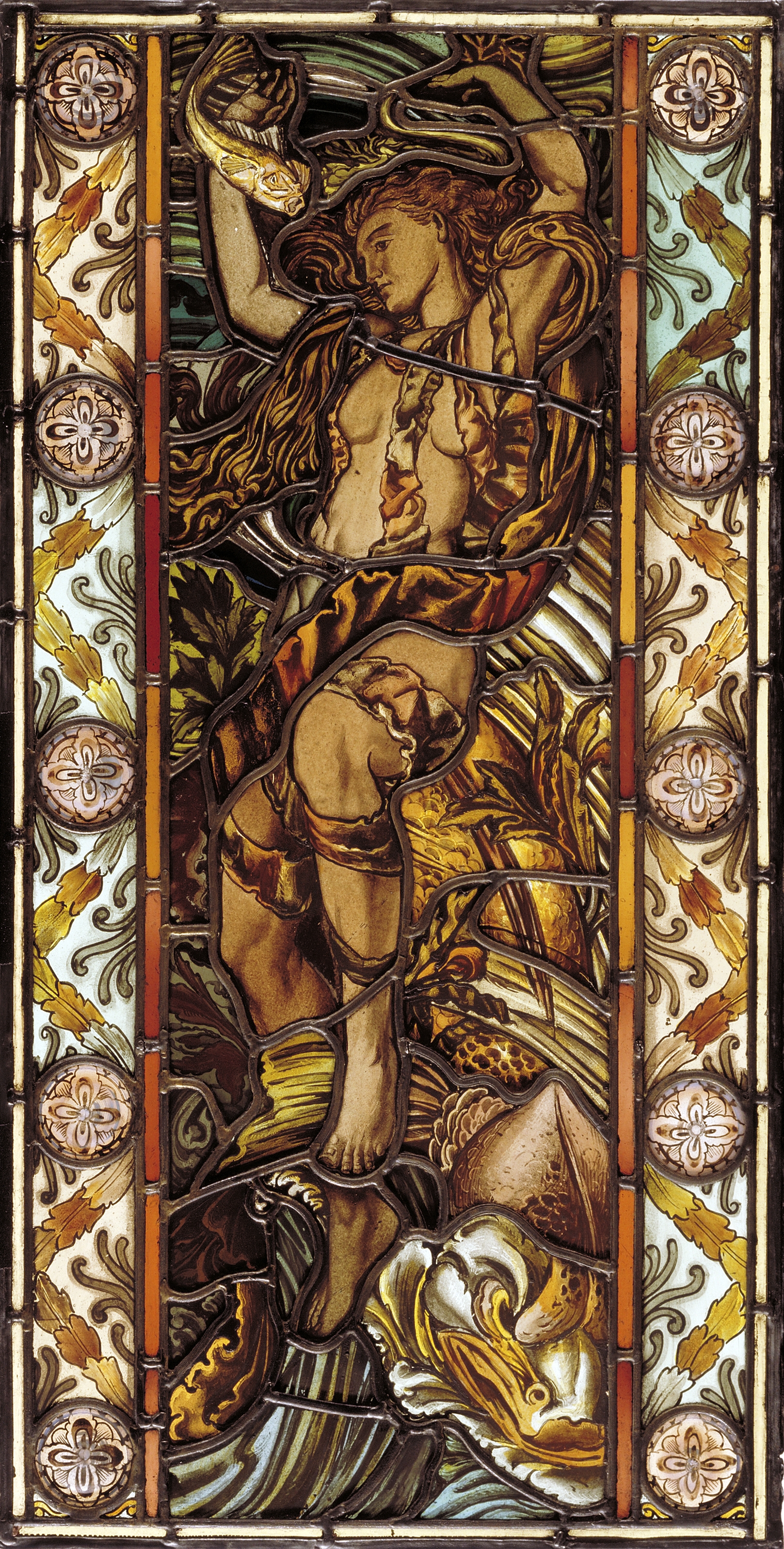They were among the first works to enter Mia’s collection, four large-scale female allegories of the Four Elements (from left to right): Air, Water, Fire, and Earth. Mrs. C. J. (Ella) Martin had spotted the cartoons, that is, designs drawn to scale, at the gallery of Edmund Brooks, a Minneapolis dealer specializing in rare books, and she bought the set expressly to give them to the new museum. She did so in 1910, in memory of her late husband, Charles Jairus Martin. Buying four monumental nudes was a bold move (women wouldn’t have the right to vote in the United States for nine more years), and with her gift Mrs. Martin set the bar high for the level of quality and sophistication worthy of her city’s fledgling art museum.
At the time, the drawings were attributed to Dante Gabriel Rossetti, the very famous and recently deceased British painter and star of the anti-academic group known as the Pre-Raphaelites. The attribution was based on the monogram inscribed at the lower edge of each drawing: “D.G.R.”
In Minneapolis the gift was front-page news. On the cover of the December 16, 1910, edition of the Minneapolis Morning Tribune, among Wild West stories of bison attacks in Anoka, bandit bank robbers, and proposed legislation banning opium and heroin due to a developing drug habit “among messenger boys,” the paper hailed Rossetti’s “four magnificent panel pictures…considered by many the greatest of the pre-Raphaelite painters.” The writer predicted that “the time is not long distant when people from all over the country will come to Minneapolis to see them.”
By the 1970s, however, Rossetti’s authorship had fallen into doubt. Although the works’ high quality was never in question, the matter of who made them was. Numerous possibilities were proposed—the accomplished painter Frederic James Shields, a close friend of Rossetti’s; along with such illustrators and stained glass designers as Henry Holiday, Frederick Sandys, and John Henry Dearle. One by one, experts dismissed them. It seems scholars could agree only on which artists had not executed the designs.
In 1981, the museum purchased a related stained-glass window that had as its source the Water allegory design. Here the stained glass artist had translated the monochrome design into a vibrant harmony of amber, yellow, orange, and blue. Small changes were made to the composition—the placement of the lead outlines, the addition of more seaweed to obscure the nudity of the figure, adjustments to the scale of the sea creatures—but the organic, curvilinear quality of the drawing was retained even in the more restrictive medium of glass. Surprisingly, however, the glass is about half the size of the cartoon. The dealer who sold the window to the museum reported that its history and provenance were lost before he acquired it. The authorship of this and the Four Elements remained a mystery.
For years, I corresponded with various scholars of British art about the drawings, but none could solve the puzzle. Then, last November, I tracked down Peter Cormack, the noted British and American stained glass expert. His new book Arts & Crafts Stained Glass (Yale University Press, 2015), already a definitive work in the field, represents four decades of research on late 19th-century stained glass. Just one month later, nearly 105 years to the day since the works entered Mia’s collection, Cormack produced the name of our unknown artist.

Colonel John T. North, in the November 1889 issue of “Vanity Fair.”
He traced the cartoons to a commission at Avery Hill, a grand house in southeast London that belonged to Colonel John T. North. North had made a fortune importing guano from South America to manufacture fertilizer, earning the sobriquet “The Nitrate King.” He purchased the Avery Hill estate in 1888 and hired the architect T.W. Cutler to undertake a massive refurbishment and construction project at the property. Campbell, Smith & Co., a London-based business specializing in decorative art, was hired to produce stained glass for the mansion’s grand staircase, and it executed the Four Elements. The designer of the project and skilled artist behind our cartoons was Frederick G. Smith.

The East Wing of Avery Hill Mansion, built in 1890, demolished in 1946.
The house—now part of the University of Greenwich—was badly damaged by German bombing during World War II. Mia’s related stained glass window also may have come from Avery Hill or, given its smaller size, may represent another version of Smith’s design executed by his firm at some point. Cormack found two of the Mia cartoons reproduced in double-page spreads in the January 1890 issue of The British Architect. In the related article, the writer praised the firm’s designs and completed stained glass: “whilst producing effects of delicacy and refinement, their work is almost always virile.”
Little is known about Frederick G. Smith. He entered into partnership with Campbell in 1873 and retired in 1889 at a high point—his monumental designs for the Four Elements adorned one of the grandest new houses in London and were enthusiastically reviewed in an important trade magazine. Just 20 years later, Smith’s authorship of the cartoons was all but effaced, and the more marketable name of Rossetti was attached to them. The museum is grateful to Peter Cormack for solving the mystery behind these wonderful works and giving this admirable artist his well-earned recognition.


